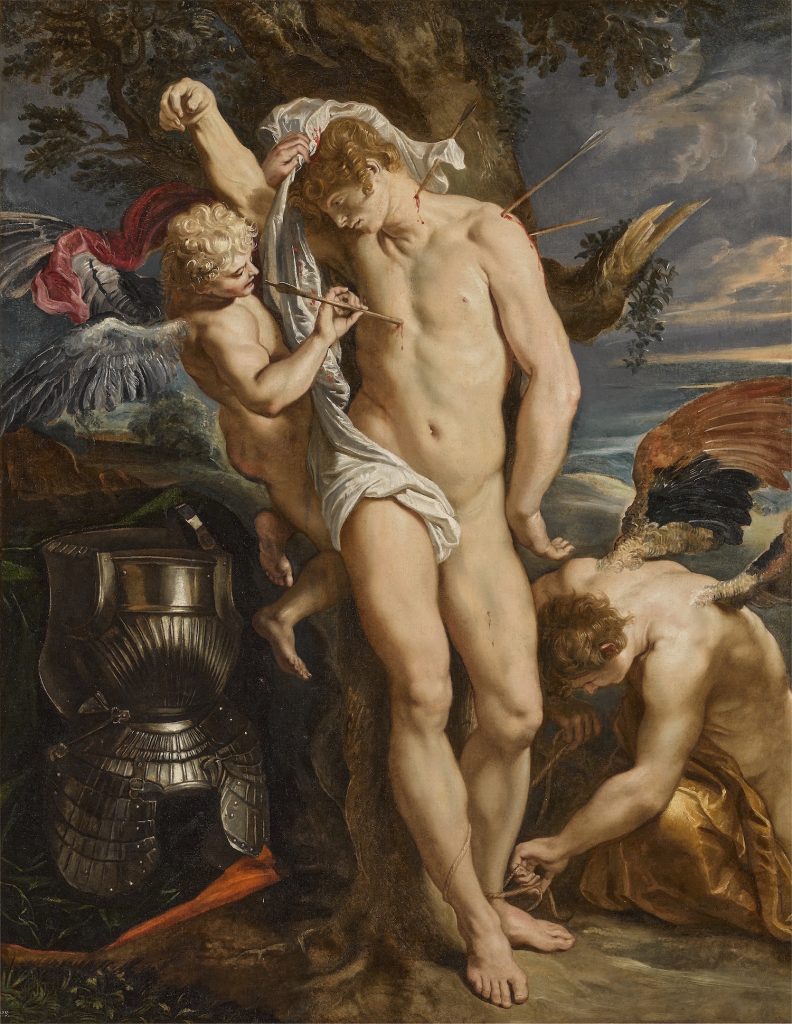Pratiksha Shome
A significant Old Master painting that had been mistaken for another over the span of 300 years will finally be sold at a Sotheby’s auction in London in early July. “Saint Sebastian Tended By Two Angels” by Sir Peter Paul Rubens is the picture in dispute. A range of £4 million to £6 million ($5 million to $7.7 million) has been estimated for it. The Rubens story is a “classic” art mystery concerning a painting that had been lost to history for generations between leaving a prominent Italian collection in the 1730s and then turning up in Missouri in the 20th century. Now that enigma has been cleared up.
Researchers and specialists from Sotheby’s team have determined that the picture is in fact a Rubens creation after using X-rays to scan beneath its surface. They also learned that it is “the prime” form of another significant piece by the artist that was previously believed to be unique. The Spinola family, the Genovese supporters of the artist, last held the artwork in their possession in the early 1730s. The artwork had been attributed to French painter Laurent de la Hyre when it emerged at auction 15 years prior. According to the Artnet Price Database, it sold at Ivey-Selkirk in St. Louis at the time for $40,000. That amount was considerably more than the high $8,000 estimate yet being modest in relation to the current projection. Soon after that auction, it was determined that it was a Rubens creation, and academics began an in-depth investigation that led to the canvas being matched to a Rubens mentioned in the Spinola family’s wills and inventories.
Although there is not universal agreement among scholars, the artwork was most likely created between 1606 and 1608 in Italy or between 1609 and 1610 in Antwerp. When Rubens first arrived in Genoa around 1604, their intimate relationship began. It continued well beyond his late 1608 departure to Antwerp. Ambrogio Spinola (1594–1630), an Italian aristocrat and military leader with whom the artist shared a variety of diplomatic, political, and aesthetic interests, is most likely the commissioning party for the picture. Before being passed down through the family for eighty years, the picture was first mentioned in the testament of Ambrogio’s son Filippo Spinola in 1655. With the patron’s granddaughter Anna Spinola, who was described as inheriting the picture in 1731, the trail fell cold. Sebastian the Tend Once By Two Angels left the Spinola family and through Anna Spinola’s female line of succession, it was lost to history until it was discovered again in the United States 230 years later, in a collection in Missouri, in 1963. Later, the current owner purchased it at the aforementioned auction in 2008 when it was still a Laurent de la Hyre painting.
The artwork by de la Hyre that has ever fetched the highest auction price is Narcisse, which sold at Artcurial Paris last autumn for €918,400 ($922,000). Massacre of the Innocents (1609–11), which was auctioned at Sotheby’s London in 2002, set the auction record for a Rubens piece at £49.5 million ($76.5 million). Additional information on the painting’s status as the primary version of another Rubens work depicting the same subject that has been owned for centuries by the Italian Corsini family and is currently on display at the Galleria Corsini in Rome was also uncovered by the X-ray study.
While working on the Spinola version, the artist made significant adjustments to the composition and made significant alterations to the design. For instance, Saint Sebastian was initially depicted with his back to the viewer, his left arm stretched over his head, and he was twisting to the left. His right leg was initially pierced by an arrow, and the armour was added afterwards, painted over another element that Rubens had removed. According to Sotheby’s, x-ray examination of the Corsini painting revealed no substantial alterations at all, indicating that it was completed after Rubens was pleased with his concept.
The finding is “proof that even great artists’ names can be lost to history,” according to George Gordon, co-chairman of Sotheby’s Old Master paintings globally. Fortunately, the fascinating detail discovered by scientific analysis, along with meticulous research and consideration by top scholars, rightfully affirms the reattribution of this work to one of the greatest painters of his time and shows us that there is still so much for us to learn, even about the artist’s best-known works.
Source: Artnet news





